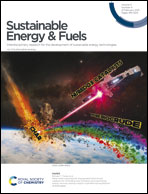Screening adsorbent–water adsorption heat pumps based on an experimental water adsorption isotherm database†
Abstract
Given the large number of existing adsorbent materials, it is an extremely challenging task to perform high-throughput computational or experimental screening of thousands of adsorbent/water working pairs for adsorption heat pumps (AHPs). To speed up the discovery of adsorbent/water working pairs for AHPs, we constructed a database containing 231 existing experimental water adsorption isotherms and evaluated the coefficient of performance for cooling/heating (COPC/COPH) and the specific cooling/heating effects (SCE/SHE) for 231 adsorbent–water working pairs. Moreover, the structure–performance relationships (SPR) between the structural properties of adsorbents, water adsorption characteristics and cooling/heating performance were analyzed. It was revealed that metal–organic frameworks (MOFs) and zeolites are more promising compared with other adsorbents. SPR analysis demonstrated that top-performing adsorbents exhibited high water working capacity (>0.1 kg kg−1), stepwise adsorption with a step position (α) of 0.1–0.4 for cooling and 0–0.2 for heating. These findings pave the way for accelerated design and discovery of adsorbents for water-based AHPs.



 Please wait while we load your content...
Please wait while we load your content...